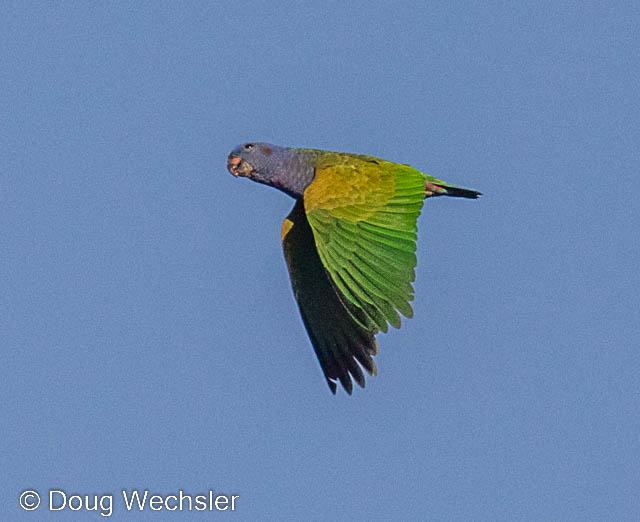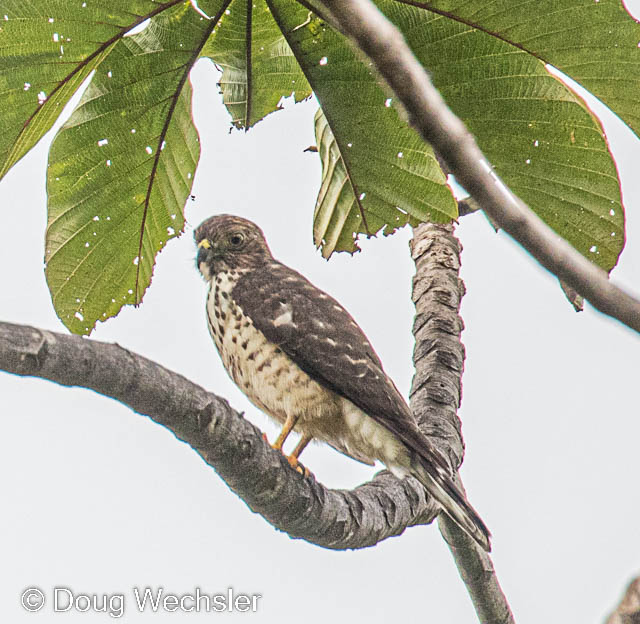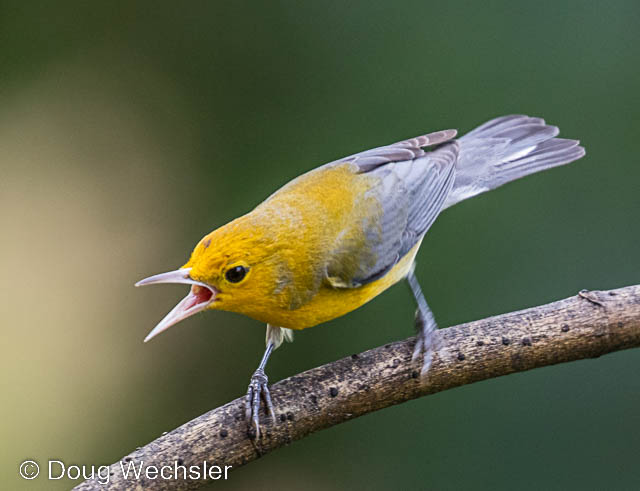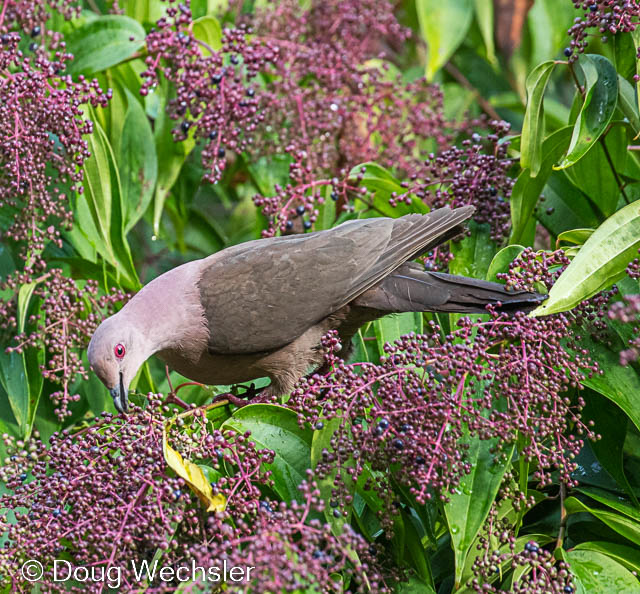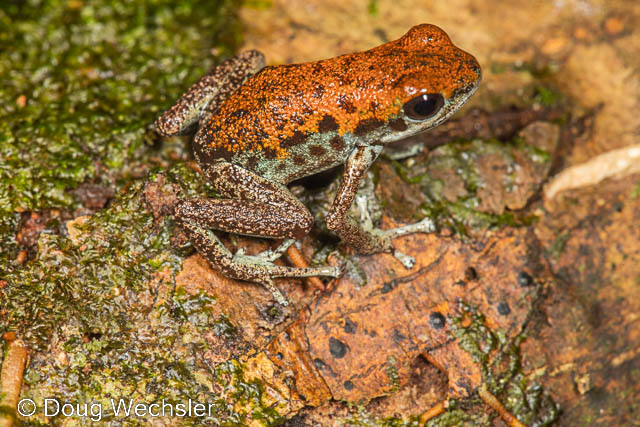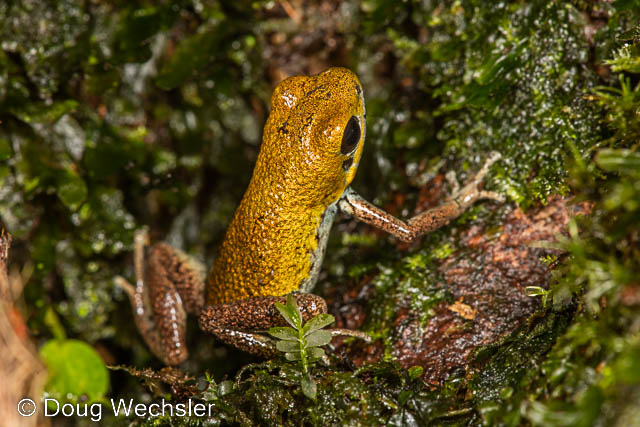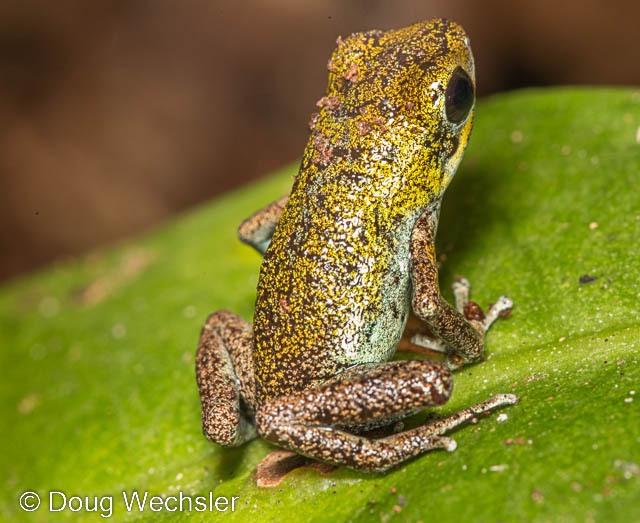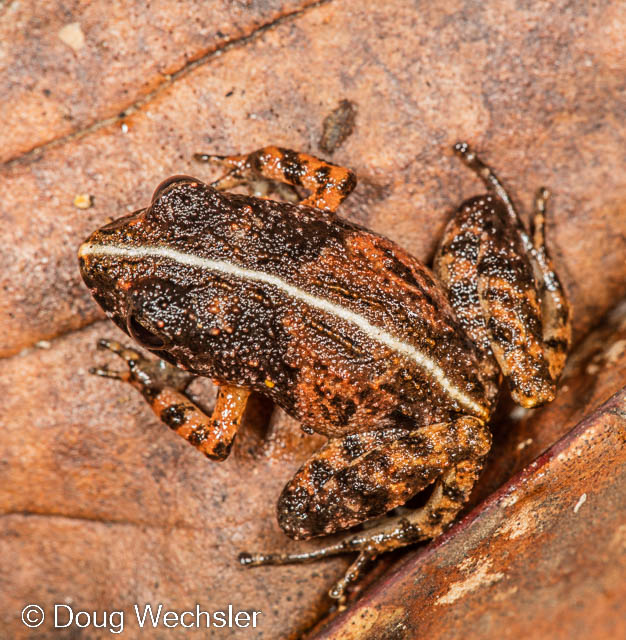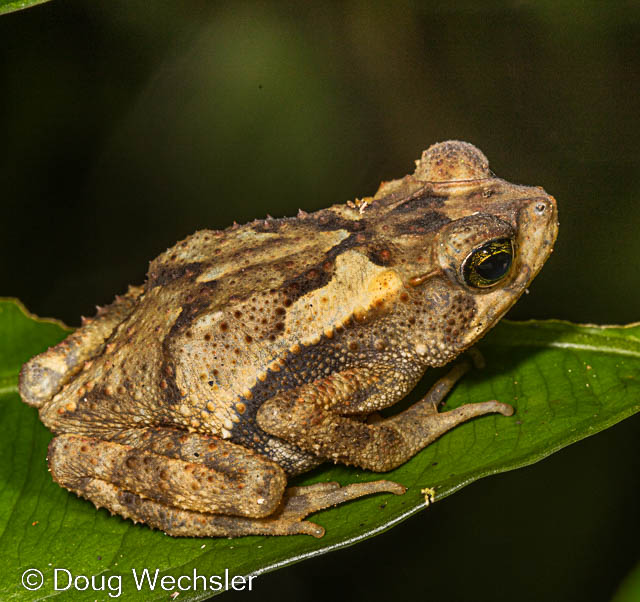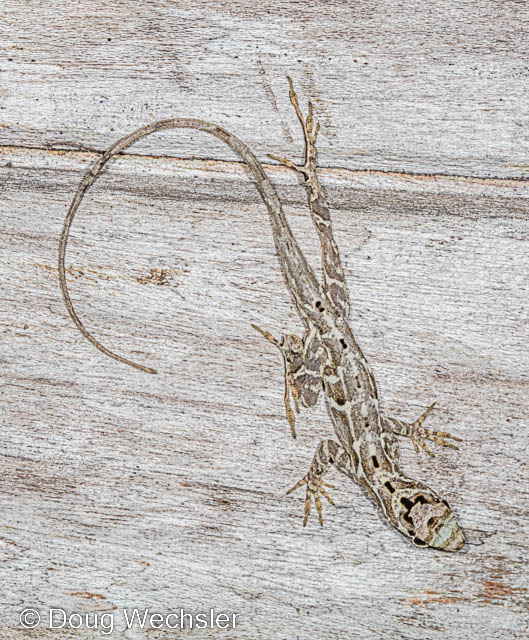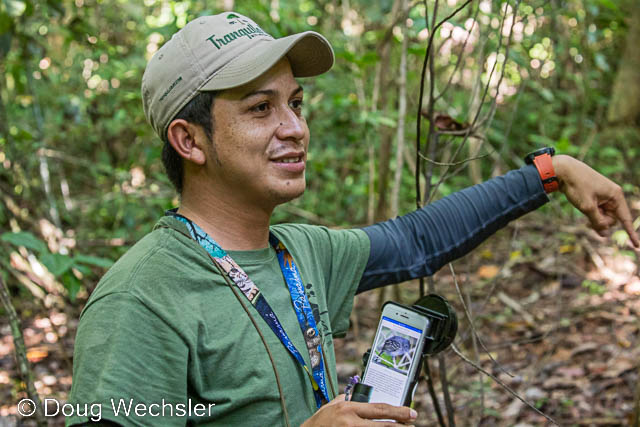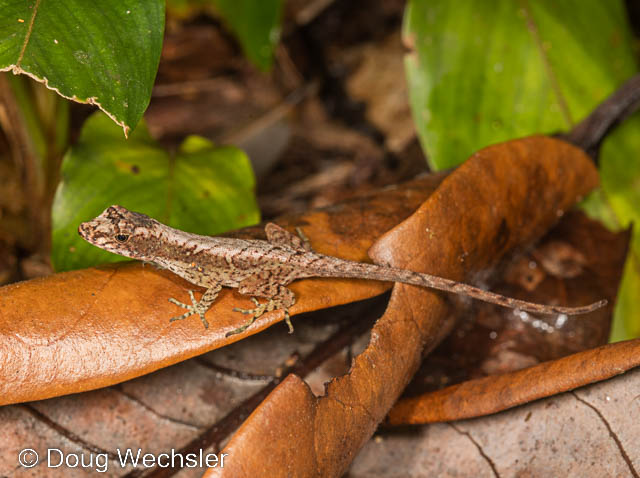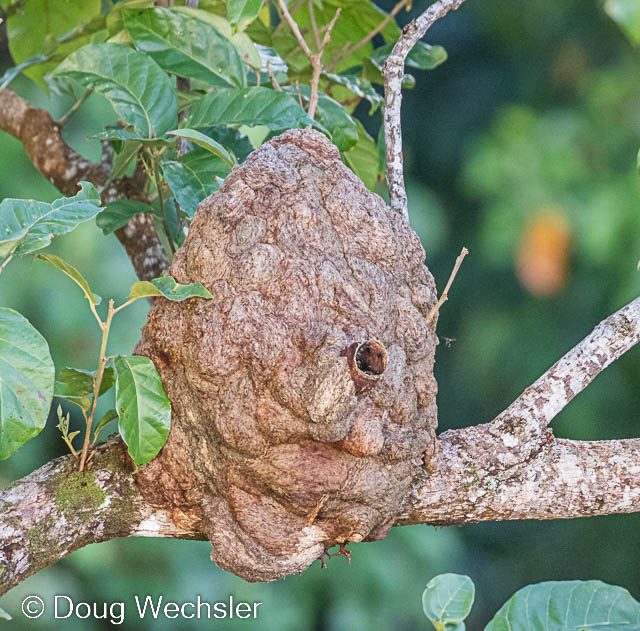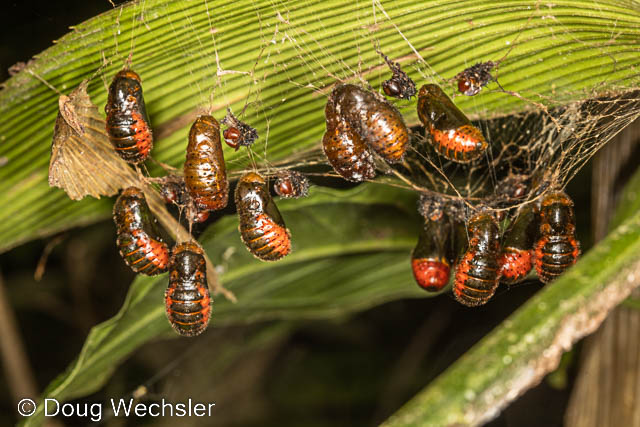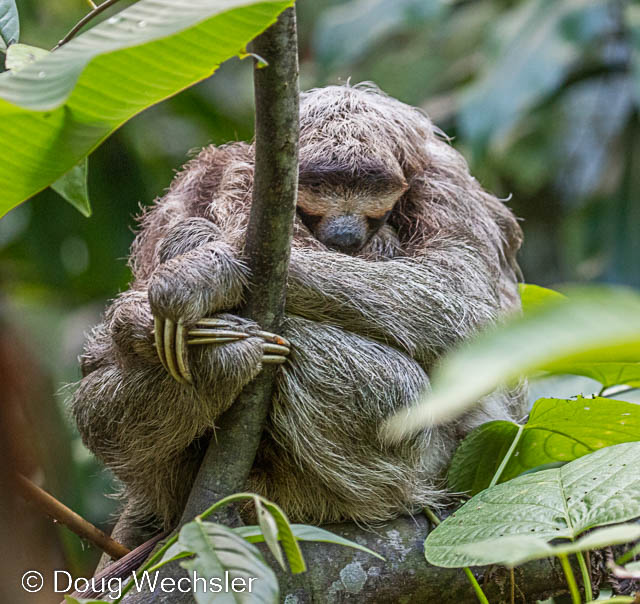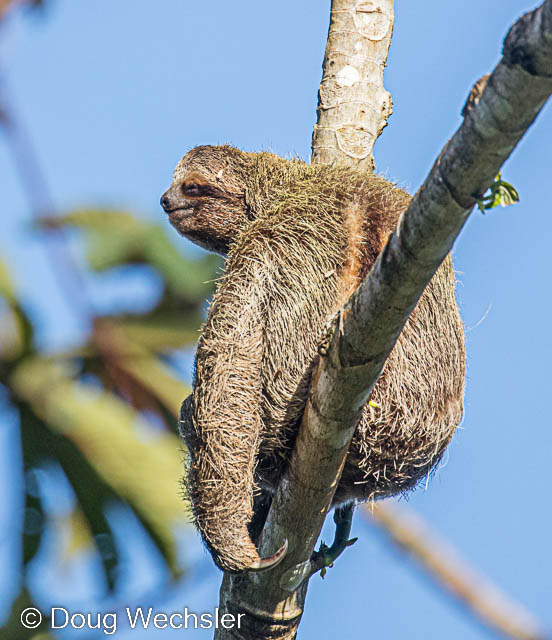A dazzling pair of Red-lored Parrots flies past the tower at Tranquilo Bay Eco Adventure Lodge on Bastimentos Island in Bocas del Toro, Panama. Climbing the tower to watch dozens of parrots fly to their overnight roost was a nightly highlight for Debbie and me.
The tower reaches 31 m (100 feet) above sea level. When you pop through the hole in the deck of the tower you never know what you will see.
From the tower, the breathtaking view alone of the bay, islands and palms makes the climb worthwhile.
A crow-sized Montezuma Oropendola from a nearby nesting colony flies by the tower. In the distance we could see the tree hosting their three-foot long hanging nests.
A blue-headed Parrot, the second-most common parrot in the area, whizzes past.
An immature Double-toothed kite perches in a cecropia tree. This hawk often follows monkeys to feed on insects and small vertebrates disturbed by the commotion.
Prothonotary Warbler was one of the most common overwintering migrants we observed (along with Tennessee Warbler). They are easier to observe here than on their breeding grounds in the eastern U.S.
A fruiting melostome bush is a bonanza for birds. It attracts fruit-eating species like this Short-billed Pigeon as well as many colorful birds that otherwise stay high up in the canopy.
Across most of its range, the Strawberry Poison Dart Frog is bright red with blue legs. In Bocas del Toro the colors vary greatly from island to island and even within one island. These following four are all from one location. Though they have toxic skin, the actual frogs used to poison darts are three other members of this frog family from South America.
Coastal Plain Litter Frogs come in a wide variety of earthy tones. Why this crazy white stripe? I think it mimics the central vein of a dead leaf helping to camouflage the frog in leaf litter.
The Green Climbing Toad has the unusual habit (for a toad) of climbing into bushes. Some members of this species are green, unlike typical toads.
Most anoles sleep on a leaf or twig at night. This Pug-nosed Anole, strecthed out on a wooden box one night, appears to be actively waiting for prey. Our perceptive guide, Roger Morales, tells me they are sometimes active at night, as may be the case here.
We were very fortunate to have Roger Morales as our guide at Tranquilo Bay. Roger is a gifted naturalist with a keen eye and ear for birds and an expansive knowledge of Panama natural history.
A Humble Anole, a ground dwelling lizard with an unpretentious demeanor, forages in its leaf-litter home.
Prowling at night near the cabin, I spotted this Seagrape Spanworm moth on the underside of a leaf.
This large stingless bee nest was built in the canopy in a very open location. Most stingless bee nests I have seen were at least partly concealed in hollow trees.
It’s not often that you find multiple butterfly chrysalises (pupae) in one place. But, the White-tipped Cycadian has a communal lifestyle in its caterpillar and pupal stages. They are also unusual in that the caterpillars eat toxic cycad leaves.
Tranquilo Bay is on a small island with no large predators. Consequently, sloths can sleep near the ground safely. This female has a baby hidden in its arms.
Bastimentos Island where Tranquilo Bay is located must have a huge population of Three-toed Sloths. This is one of ten we saw in just one day.





